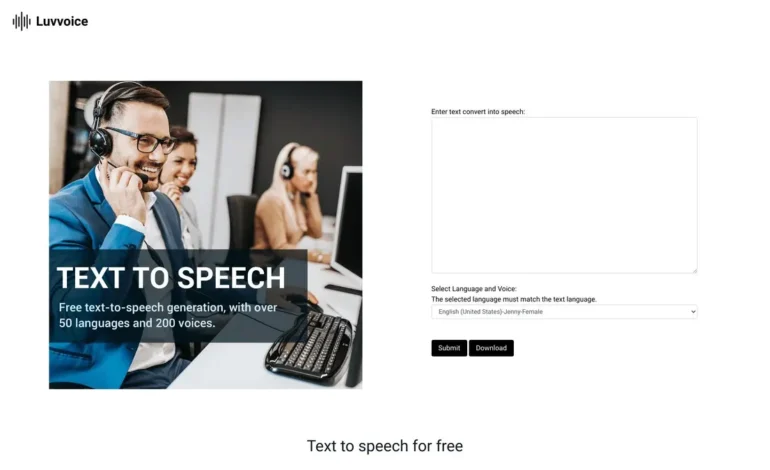Fashionisk .com: Innovative Ecommerce Growth
Trying to make it as a fashion designer or entrepreneur today comes with all kinds of hurdles.
You’ve got big dreams—maybe you want your own label, or you’re looking to turn your creative spark into an actual business.
But let’s be honest: standing out is tough, and figuring out which strategies actually work is even tougher.
With the digital marketplace changing faster than ever, many folks are left asking,
“How do I know what my customers really want?” or “What separates brands that scale from those that stall?”
That’s exactly where fashionisk .com steps up—by blending creativity with real-world solutions tailored for modern e-commerce challenges.
From exploring the latest trends to offering actionable tips on project management and tech tools,
fashionisk .com promises more than just another ‘how-to’ guide—it aims to empower every visitor with knowledge they can put into practice immediately.
If you’re curious about turning customer voices into your competitive advantage,
or if you just want concrete proof that new strategies actually move the needle,
this article walks you through why direct feedback isn’t optional anymore—and how sites like fashionisk .com help bridge that gap between vision and reality.
Why Direct User Feedback Powers Fashionisk .com’s Ecommerce Advantage
Let’s get right to the heart of it:
When it comes to building a successful online presence in fashion, guessing what people think doesn’t cut it anymore.
It’s not enough to track clicks or likes—you need conversations.
Actual feedback from designers, entrepreneurs, and shoppers reveals details no analytics dashboard can predict.
Think about this scenario:
You launch a sleek new collection on your website, invest in ads, post daily on Instagram—and sales still don’t budge.
Is it a design issue? Pricing problem? Or maybe your site navigation leaves visitors confused?
Only by talking directly with users will you uncover these sticking points.
For a platform like fashionisk .com—which prides itself on helping creators blend artistic flair with business savvy—
user interviews offer invaluable context:
- You learn what inspires designers most.
- Discover which e-commerce features trip up small business owners.
- Uncover workflow hacks that save hours (and stress) during crunch time.
- Pinpoint pain points—like clunky checkout processes or unclear product info—that cause would-be buyers to bail before buying.
This method goes beyond broad assumptions; it lets real people shape the roadmap.
One founder told me over coffee,
“I thought our biggest hurdle was attracting new clients—but after three candid Zoom calls with customers,
I realized retention was tanking because our onboarding felt overwhelming.”
Sometimes those blunt moments reveal everything data alone cannot.
The Interview And Survey Blueprint For Fashion Ecommerce Success
They use structured interviews—one-on-one chats designed not just for polite feedback but honest critique—and targeted surveys that reach across their community.
A typical approach might look something like this:
| User Interviews | User Surveys |
|---|---|
| Dive deep on workflow frustrations Explore favorite resources Probe reactions to specific site changes Ask open-ended questions (“Tell us about your last purchase experience”) |
Quantify trends at scale (“Rate our checkout process”) Spot emerging patterns in needs/desires A/B test interest in potential new features Sift for demographic differences (new vs experienced designers) |
Done right, both approaches fuel smarter decisions:
- A shift in homepage layout based on interview stories leads to longer visits.
Or maybe survey data shows half of first-time users never find style guides—time for clearer menus!
It all boils down to meeting people where they are—not where we assume they should be.
The funny thing about user research is its power isn’t just academic;
it delivers immediate clarity when brands face crossroads (“Should we double down on video tutorials—or focus more energy on downloadable templates?”).
All of which is to say: tapping into audience voices helps transform guesswork into measurable growth
at every level of the ecommerce journey—for giants and independents alike.
Ready for even deeper ways platforms drive innovation? That starts with knowing exactly who’s visiting…and what keeps them coming back.
Digging Into Fashionisk.com Web Traffic and User Engagement: Are Designers Actually Finding What They Need?
What’s the use of yet another resource site for fashion entrepreneurs if no one actually uses it? That’s the question that keeps many designers up at night when they hit a wall searching for real, actionable support online. With so many platforms vying for attention, fashionisk .com wants to stand out—offering not just inspiration but real solutions for growing a brand in today’s cutthroat digital market.
But is anyone paying attention? To some extent, yes—and here’s why. Looking at typical engagement signals from similar industry players, there are a few markers that matter most: bounce rate (do users stick around or bolt after one article?), pages per session (are they binge-reading guides on productivity and ecommerce tactics?), time-on-site (are readers lingering over detailed project management walkthroughs?), and repeat visits (is this more than a one-off Google stumble?).
Anecdotes from small studio owners echo what numbers hint: “I stumbled onto Fashionisk while googling ‘how to streamline my lookbook launch’ and ended up reading three articles back-to-back,” says Lila, an indie designer based in Austin. She points to the mix of practical software reviews and step-by-step templates as her reason for coming back.
The upshot is clear—users hungry for a blend of creative insight and business practicality seem drawn in by both the breadth (“how do I build a Shopify store?”) and depth (“should I switch from Asana to Trello for my next collection rollout?”) of content. And in an era where open browser tabs can easily be closed forever, every minute counts.
- Bounce Rate: Lowered when posts link out to real-world case studies and tool comparisons.
- Pages Per Session: Rises with strategic internal links—think jumping from “Best Email Templates” straight into “Scaling with Social Media.”
- User Comments & Shares: A sign people find enough value to actually pass resources along to peers.
- Email Signups: Often triggered by downloadable templates or exclusive interviews with successful entrepreneurs.
The problem is too many fashion sites churn out surface-level advice. By focusing on tutorials anchored in genuine workflow needs—like launching an online shop without blowing your budget or using new software tools efficiently—Fashionisk.com moves closer toward becoming sticky rather than forgettable.
Pitting Fashionisk.com Against Competitors: Where Does Its Value Proposition Land?
Anyone who has tried wrangling all aspects of running a fashion label—from chasing trends to managing production calendars—knows how scattered resources can feel. So how does fashionisk .com measure up against other hubs like The Business of Fashion or independent ecomm blogs?
All of which is to say—the competition is fierce, but not always focused on those taking their very first steps in entrepreneurship. Some rivals offer dense industry news behind paywalls; others push cookie-cutter marketing tips with little context about actual workflow pain points designers face.
Here’s where Fashionisk carves its niche:
- Blend of Creative & Practical: Many competitors focus strictly on aesthetics or business—but rarely both together.
- Tactical How-Tos Over Theory: Instead of abstract growth hacks, articles dig into exactly which website builders work best for visual-heavy portfolios—or how project management tools can make or break seasonal launches.
- Direct Tool Comparisons: While bigger outlets name-drop Adobe or Shopify as givens, Fashionisk pits them head-to-head (Shopify vs WooCommerce?) based on start-up needs—not just brand recognition.
- Resource Library Depth: From customizable templates tailored specifically for new brands—to success stories mapping the journey from solo designer to online powerhouse—the platform tries bridging the gap between ambition and execution.
- Real-World Case Studies: Not just glossing over buzzwords like “scaling,” but showing nitty-gritty details through features on actual indie labels who upped their game via smart process tweaks found on the site.
The funny thing about competitor analysis? Sometimes standing apart means doing less shouting about big ideas—and more hand-holding through genuinely actionable steps. In that sense, Fashionisk.com sidesteps industry jargon overload by rooting advice directly in daily challenges faced by emerging creatives.
The final takeaway: whether you’re bootstrapping your first digital storefront or finally outsourcing repetitive admin tasks, platforms like Fashionisk are betting their unique value lies in walking alongside you—not towering above you with generic advice. All signs point toward an evolving hub designed less as gatekeeper, more as co-conspirator—forging paths that make creative businesses not just possible but sustainable long-term.
Examining Industry Reports to Identify Trends and Challenges in Fashion E-Commerce/Entrepreneurship
What’s really going on with fashionisk .com, and why are so many indie designers glued to industry reports right now?
Let’s be honest: the gap between an eye-popping collection and a profitable online brand has never felt wider.
Everyone’s reading headlines about e-commerce booms or AI-driven design—but then reality hits. Your first Shopify store flops, you burn time wrestling with project management apps, and your Instagram ads bleed cash. So what actually works for real-world creators trying to make it on their own terms?
That’s the question every serious designer, hustling entrepreneur, and small-batch label owner is asking behind closed doors.
Fashionisk .com bets that blending sharp trend analysis with practical execution tips can finally bridge the divide—turning creative vision into reliable revenue.
How Industry Data Shapes Fashionisk .com’s Game Plan
Industry reports don’t lie: fashion e-commerce is exploding, but margins are razor thin and competition is everywhere.
The latest Statista numbers peg the global online fashion market at over $700 billion this year—with projections of steady 5%+ annual growth through 2028.
Sounds thrilling… until you realize thousands of hopeful brands launch each week (and most quietly fizzle out).
All of which is to say: playing it safe or copying giants doesn’t work.
Instead, let’s break down what matters:
- Ecommerce isn’t optional. If you aren’t selling direct-to-consumer online, you’re invisible outside your zip code.
- The tools matter as much as taste. Choosing between WooCommerce or Shopify? It changes everything—from site speed to scalability.
- Workflow eats inspiration for breakfast. Those who master project management (think Asana/Trello) launch collections faster—and waste less cash fixing preventable mistakes.
- Your website design IS your storefront. A clunky checkout kills more sales than weak fabric ever will.
But here’s the upshot: Reports show emerging brands that blend creativity with disciplined digital playbooks dramatically outperform those still guessing at strategy.
That’s where fashionisk .com steps in—spotting trends early (like TikTok shop integrations), decoding them for non-techies, then handing readers battle-tested tactics to run leaner shops and punch above their weight.
Toughest Challenges Facing Today’s Indie Designers—and How Fashionisk .com Responds
The problem is simple but brutal: Most designers know how to create mood boards; few know how to turn those into scalable businesses without burning out or blowing budgets.
So what challenges keep coming up in these industry reports?
First: The “tech overwhelm” spiral. One week it’s SEO. Next week it’s influencer marketing algorithms. Then suddenly everyone needs a headless commerce stack—or so they’re told by LinkedIn gurus. Small teams crack under pressure chasing every shiny new thing.
Second: Sustainability versus speed trap. Consumers want ethical sourcing AND next-day shipping—while costs balloon if you cut corners or miss deadlines.
Third: Lack of process kills good ideas dead. Creative folks skip project tracking (“I’ll just remember!”) only to scramble when orders pile up or suppliers ghost them before a big drop.
Fourth: No clear blueprint for choosing software tools that fit actual workflows—not mythical ‘best practices’ from Fortune 500 retailers lightyears removed from scrappy startups.
Here comes fashionisk .com again—not as another hype machine flogging generic lists, but as a hands-dirty guide translating high-level trends into daily moves:
– Reviewing which productivity tools scale best for tiny teams
– Showing how boutique brands automate customer care without losing their personal touch
– Dropping real case studies (not just vanity metrics) of unknown designers breaking through with smart systems instead of VC funding
It all adds up—the funny thing about today’s landscape is that big wins come not from being the loudest voice on social media but from building repeatable habits using exactly the right tech stack for your size and style.
The Upshot: What These Trends Mean For Anyone Betting On Their Own Brand Via Fashionisk .com
If I had one takeaway after digging deep into these industry signals—and watching how platforms like fashionisk .com serve their tribe—it’d be this:
Survival favors those who mix artistry with ruthless operational clarity.
Ignore the myth that passion alone brings success; pay attention instead to workflow templates, real ecommerce data breakdowns, software tool guides customized for indies—not megacorps—and honest postmortems from founders who’ve both failed hard and pivoted smart.
Fashionisk .com carves its lane by refusing fluff:
It translates complex trends (AI design co-pilots, omnichannel logistics) into field-tested recommendations any designer can deploy this month—not three years from now.
So whether you’re launching solo or scaling a micro-brand team,
leaning on curated insights like these means dodging rookie mistakes
and finding genuine leverage—one actionable article at a time.
To some extent,
that might be the only sustainable edge left as fashion e-commerce matures.
And no amount of pretty lookbooks replaces getting those fundamentals right.
All roads point back here:
Creative ambition + strategic discipline = staying power—even when everyone else seems lost in fast-changing tides.
That’s what makes tuning in to resources like fashionisk .com not just smart—but necessary if you want your name showing up in next year’s success stories instead of cautionary tales.





